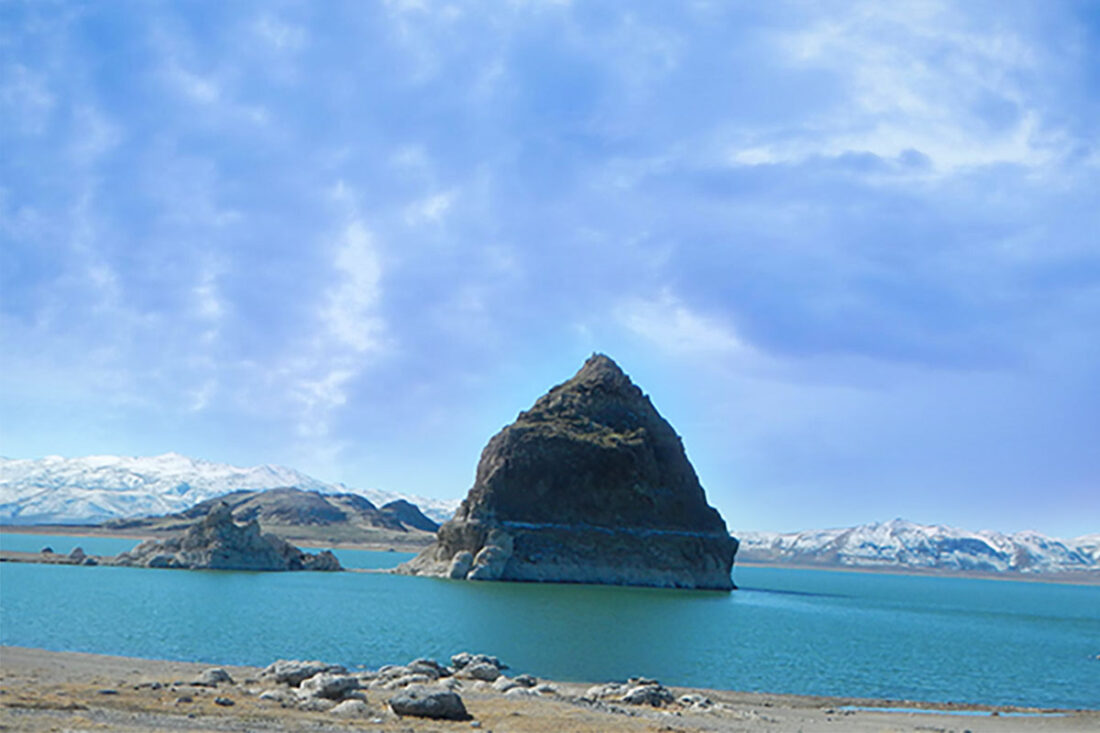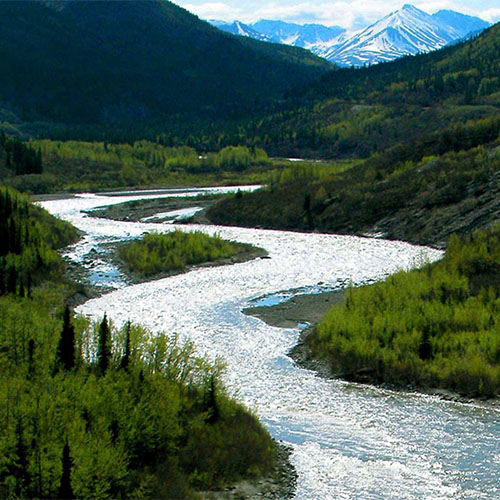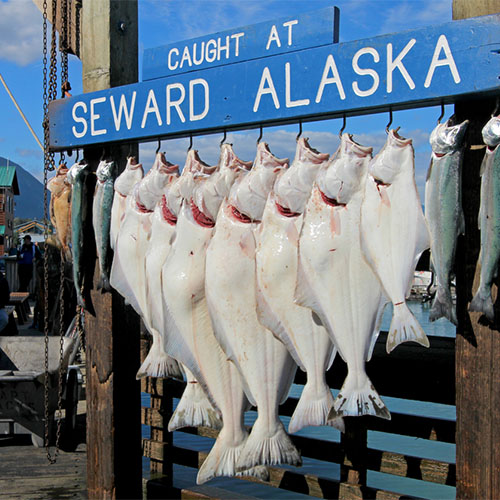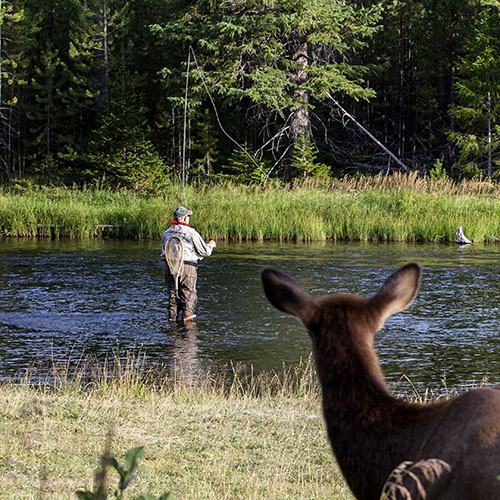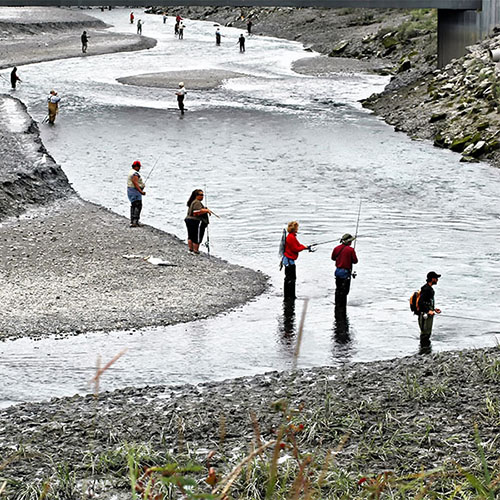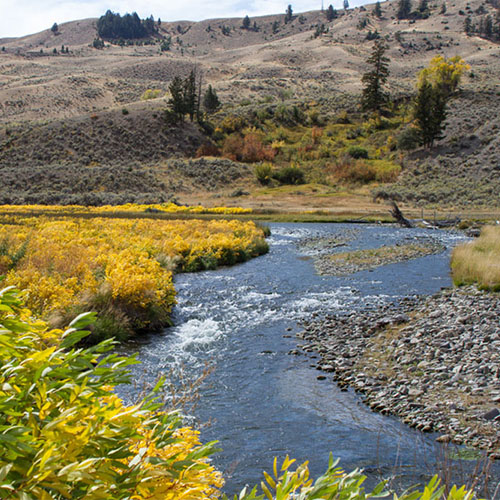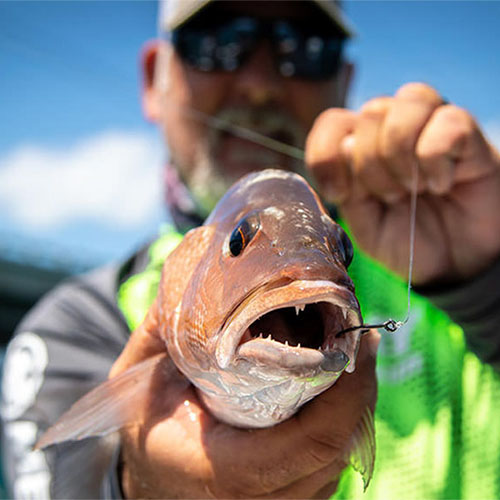Are you ready to catch some big fish? Welcome to Pyramid Lake!
Pyramid Lake is a world class fishery best known for populations of massive Pleistocene Epoch Lahontan cutthroat trout. In fact, the world record Lahontan cutthroat was caught here—a 41-pound 1-ounce monster. Pyramid Lake is also the last stronghold and only place in the world where ancient Cui-ui fish can be found. Pyramid offers a one of a kind fishing experience and is a bucketlist must.
While Lahontan cutthroats are the main draw to Pyramid Lake, anglers will also find several other fish species including healthy populations of Sacramento perch. Pyramid Lake holds the size record for Sacramento Perch which weighed in at 4lbs 9oz. You’ll also find Tui Chub, Cui-Cuit, and Tahoe Sucker, but trout and perch are going to be your target game fish.
Pyramid Lake is an artificial lures only fishery—no bait allowed. Jigging a tube is a productive methods for targeting cutthroats. Flatfish, spoons, and dirty dancer plug lures are three more options that always get the cuttroats biting. If perch is on the menu, you can’t go wrong fishing small spinners, spoons, and jigs.
The 5 Fish Species in Pyramid Lake
Pyramid Lake comprises five fish species: Lahontan cutthroat trout, cui-cui, Tahoe sucker, tui chub, and Sacramento perch.
Lahontan Cutthroat
The Lahontan Cutthroat Trout is a pleistocene species that dates back over 2 million years. They derive their name from the distinctive red slashes that run below their gills. Sightings of mamoth Lahanton Cutthroats weighing over 60 pounds have been reported. The largest confirmed catch weighed in at just over 41 pounds. Compared to riverine Lahonton Cutthroats which rarely reach over 5 pounds, Pyramid Lahonton routinely weigh more than 20 pounds.
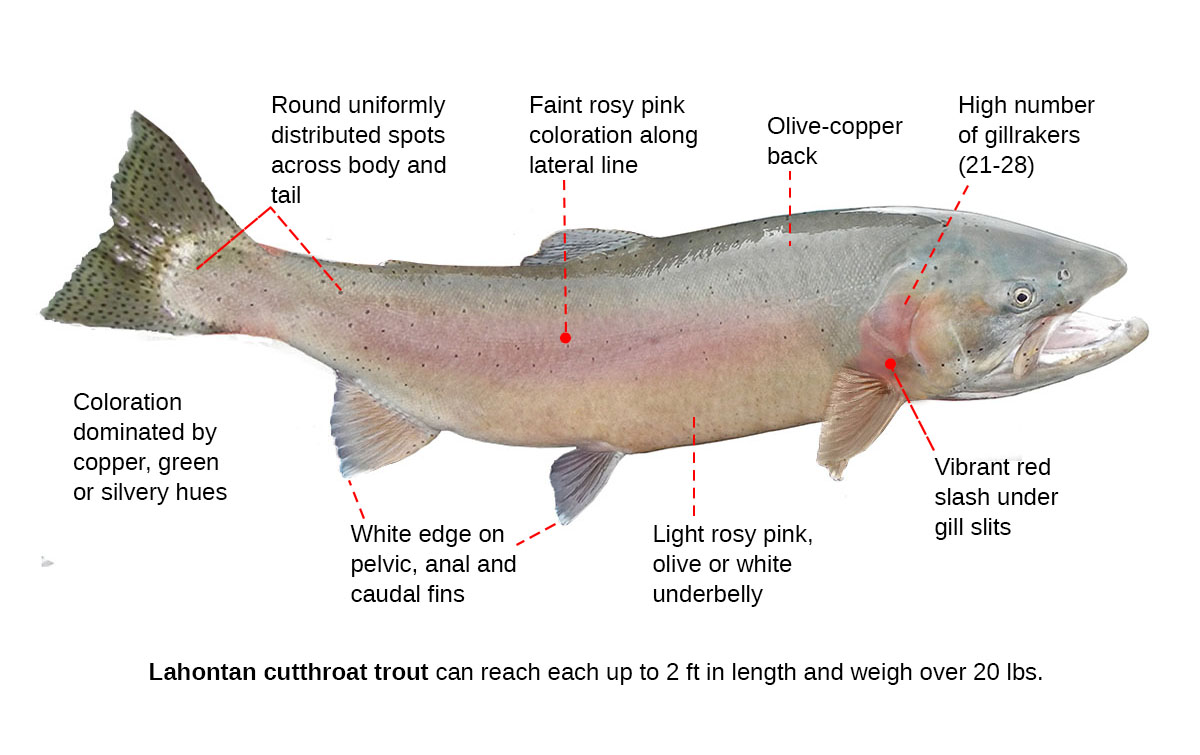
There are several techniques angler can use to catch Lahontan cutthroats. Trolling, jigging, casting spinners and swimbaits, and fly fishing are the most common methods for targeting cutthroats on Pyramid Lake. If you’re bringing a boat, troll a bit to get some bites and find the schools, then come at them from above with jigs. Jigging for cutthroats with jigging tubes is very effective if you can find where they’re holding.
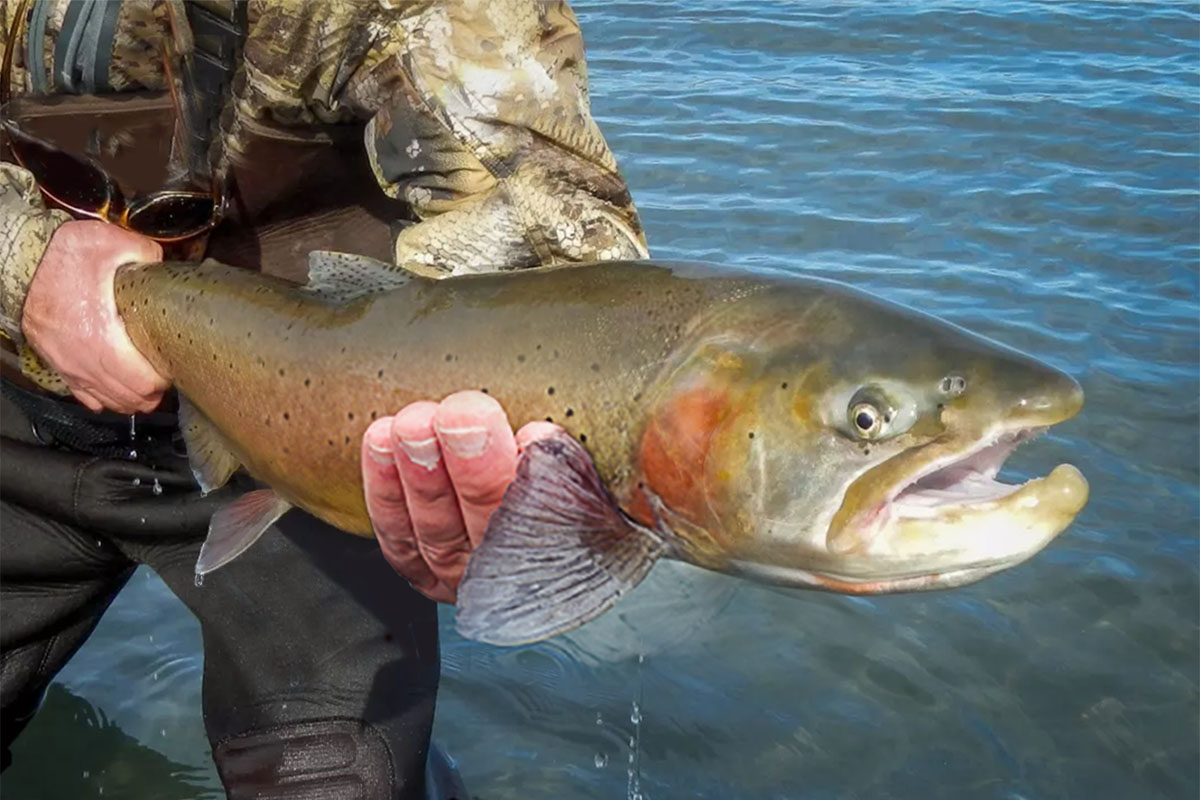
Sinking and stripping by dragging a streamer along the bottom using a sinking line is probably the most common technique for fishing cutthroats. Nothing too special about this technique but it works great for targeting cutthroats on or near the bottom. Cast out as far as you possibly can and retrieve at a consistent medium paced strip.
Your preferred rod is going to be an 8 weight, but anything between 7-9 will get the job done. A sinking line will fall through the water column at about 5-6 inches per second. Count down until your line reaches the desired depth before starting your retrieve. A basic setup includes a 2-3 foot 0x premium fluorcarbon tippet adjoined by another 6 feet of 1x tippet.
Floating line and an indicator is going to be the other main method for targeting Lahontan Cutthroats. You’ll fish this setup just as you would when river fishing. The most effective presentation includes suspending balanced leech, midge, or mayfly nymph patterns, as their horizontal presentation looks more natural and allows them to remain in the stike zone longer.
You’ll want a little longer 11′ rod in the 6-7 pound range when fishing an indicator on a floating line. And using a two handed roll cast technique will help you cut through the wind, which there is plenty of at Pyramid Lake on most days. A 7-9 foot monofilament tapered leader adjoined to 4 more feet of 2x or 4x ultra-premium tippet. I recommend the 4x in the spring when trout are in the shallows and bit more finicky.
LIMITS 2 PER DAY. ONE 17″ TO 20″ & ONE OVER 24″
OR TWO 17″ TO 20″
Sacramento Perch
Of the five fish species found in Pyramid Lake, Sacramento Perch is the only non-native species. Perch are piscivorous fish and compete with Lahontan cutthroats for food. There had been concern that populations of Sacramento Perch could cause declines in Lahontan populations, but this hasn’t been the case. If anything, it’s the Sacramento Perch that have been declining in numbers.
The Sacramento Perch fishery is not as well developed as the cutthroat fishery, but it still provides excellent fishing opportunities for anglers who come prepared. Perch are best fished during late spring and early summer when water temperatures have warmed—but the perch bite is strong through October. Where fishing season for Lahontan cutthroats runs October through June, perch can be fished year-round.
Perch typically hold at depths less then 30 feet, but can found in water as shallow as 3 feet deep during spring spawn. Their preferred habitat is vegetation and weed beds, structure such as rock piles, and sandy or gravel bottoms. They’re often found adjacent to weeds, brush and rocks.
Stripping nymphs and streamers is a productive fly fishing method for targeting perch. When using conventional gear, crappie jigs, minnow baits, small spinners, spoons, plastic worms and curly tailed jigs in the 1/32 to 1/8 oz range will get bites.
LIMITS 10 PER DAY
Cui-ui
Cui-ui is a large sucker fish native to Pyramid Lake. Adults range between 20 and 25 inches in length and weigh from 3.5 to 6 pounds. Historically, cui-ui was harvested as a game fish by indigenous Paiute people by fishing a 3-way hook off the bottom. Due to its status as an endangered species harvesting today is stricty forbidden. If you happen to snag a cui-ui on your line it’s catch and quickly release only.
Cui-ui are sometimes confused with Tahoe suckers which are also found in in Pyramid Lake, but are quite distinguishable if you know what you’re looking for. Cui-ui are typically larger in size, have larger scales, and thinner lips than the Tahoe sucker. Cui-ui are generally long and slender with a wide, flat head.
HARVESTING PROHIBITED
Tahoe Sucker
As its name suggests, the Tahoe sucker is named after Lake Tahoe. It is native to the Lahontan Basin and common throughout Lake Tahoe and Pyramid Lake. Tahoe suckers are herbivorous bottom feeders, but also feed on small aquatic insects and crustaceans. They are a large fish that can grow up to 24 inches in length.
Though not a common target for anglers, Tahoe Suckers are quite edible by humans. These sucker fish are highly predated upon by breeding colonies of American white pelicans of Anaho Island as well as Lahontan Cutthroat Trout, and are an important part of the Pyramid Lake ecosystem.
HARVESTING PROHIBITED
Tui Chub
The Tui chub is an important part of Pyramid Lake’s overall ecosystem and serves as food source for Lahontan cutthroat populations and nesting bird species. There are two distinct genus of Tui chub in Pyramid Lake—the Lahontan creek tui chub and Lahontan lake tui chub. The Lahontan creek genus is bottom-dwelling where the Lahontan lake genus tends to hold more to open water.
Tui chub hold to the shallows during the summer and move to depths beyond 60 meters during the winter. With the return of spring in mid-May, Tui chub begin to move back into the shallows. Tui chub are not actively targeted by anglers but will sometimes take a lure intended for a Lahontan cutthroat.
HARVESTING PROHIBITED
Ladder or No Ladder?
If you’ve ever been to Pyramid Lake you make have noticed anglers lining the banks standing knee deep in the water atop of ladders. So what’s with the ladders? In short, ladders are used to get anglers out of the water so they can stay warm and dry, but more importantly standing on a ladder allows an angler to make distance casts out to drop offs and get their line in front of foraging trout.
The drop offs around the Pyramid Lake occur at different distances from the shore at varying depths. Along the east side and southern end of the lake drop offs occur only a few feet from the shoreline in only a couple feet of water. Along the northern and middle sections of the lake drop offs can occur as far as 100 yards out in more than 6 feet of water, making it challenging for anglers to reach.
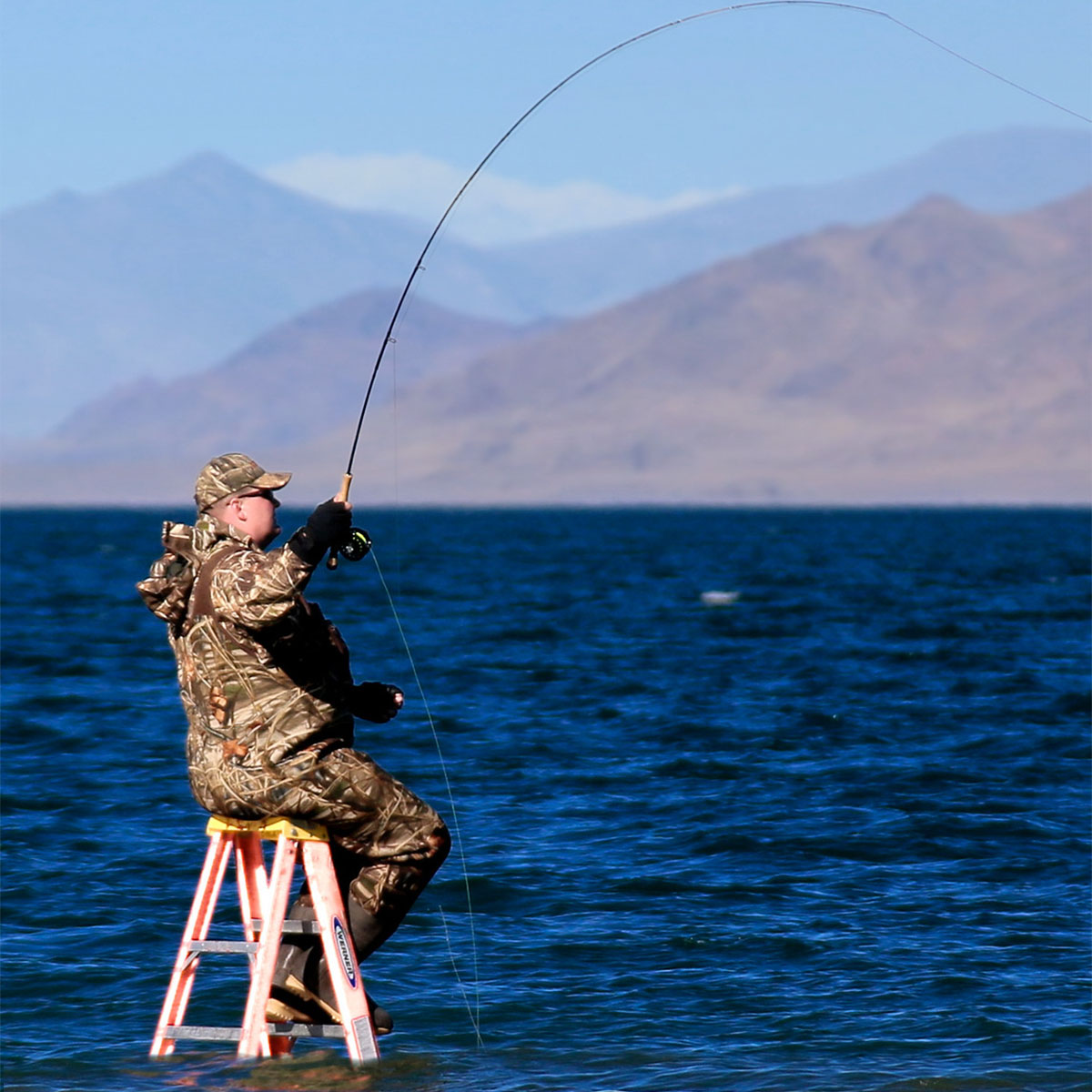
Ladders provide a benefit under certain conditions, but they can also be a detriment to an angler and the other anglers around him. When there are waves, extreme cold, and wind, it may make sense to use a ladder at beaches where the drop off is close to shore, but place it back a good 6 to 8 feet from the edge of the drop off to mimimize the chance of the Lahontan seeing you and getting spooked.
Pyramid Lake Fishing Map
The following map of Pyramid Lake in Nevada shows the contours and water depths for different sections of the lake. You can use these contours to plan where you’re fish and what gear you may need. Areas marked or labeled in red are closed to boating and fishing.
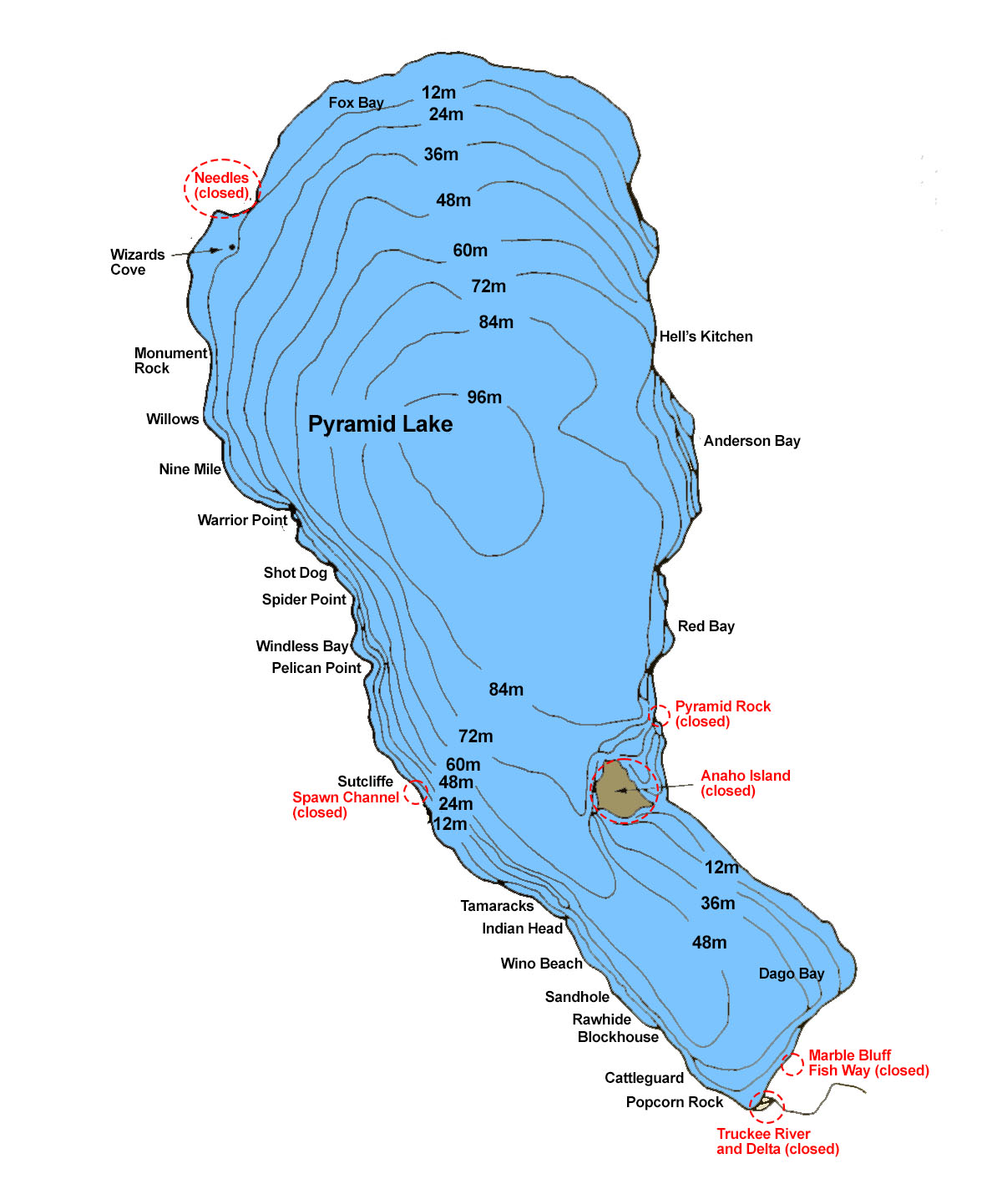
Fishing Information and Regulations
Before planning your fishing trip to Pyramid Lake makes sure to review all fishing and boating regulations ahead of time. For a comprehensive list of fishing, camping, boating and day use regulations review the Pyramid Lake Paiute Tribe Regulations Brochure.
- Only a Tribal Fishing and/or Boat Permit is required. A State of Nevada Fishing License is not required to fish Pyramid Lake.
- Barbless hooks only. Limit of 2 hooks per lure. Hooks may be singles, doubles, or treble.
- No bait allowed. Artificial lures only.
- Limit of one stringer per angler. Stingers may not be shared.
- Fish may not be filleted on the Reservation prior to size verification by a ranger.
- Slot sizes. 17-20″ or over 24″. Two 17-20″ may be kept or one 17-20″ and one over 24″.
- Fishing hours are 1 hour before sunrise to 1 hour after sunset.
- Fishing off of docks is not permitted.
- Areas closed to fishing and boating:
– 1,000 foot radius around the mouth of Marble Bluff Fish Way
– 1,000 foot radius around the Sutcliffe Spawn Channel
– 1,000 feet from the shoreline of Needles from Wizard Cove to Fox Bay
– The Truckee River from Numana Dame to Pyramid Lake
– 1,000 foot radius around the mouth of the Truckee River from March 1 through May 31
– 1,000 foot radius around the shoreline of Anaho Island
– 1,000 foot radius of Pyramid and Stone Mother (Pyramid Rock)
– 250 foot radius of all boat docks - Lahontan Cutthroat Trout season – Oct 1 through June 30
- Sacramento Perch season – Year round


